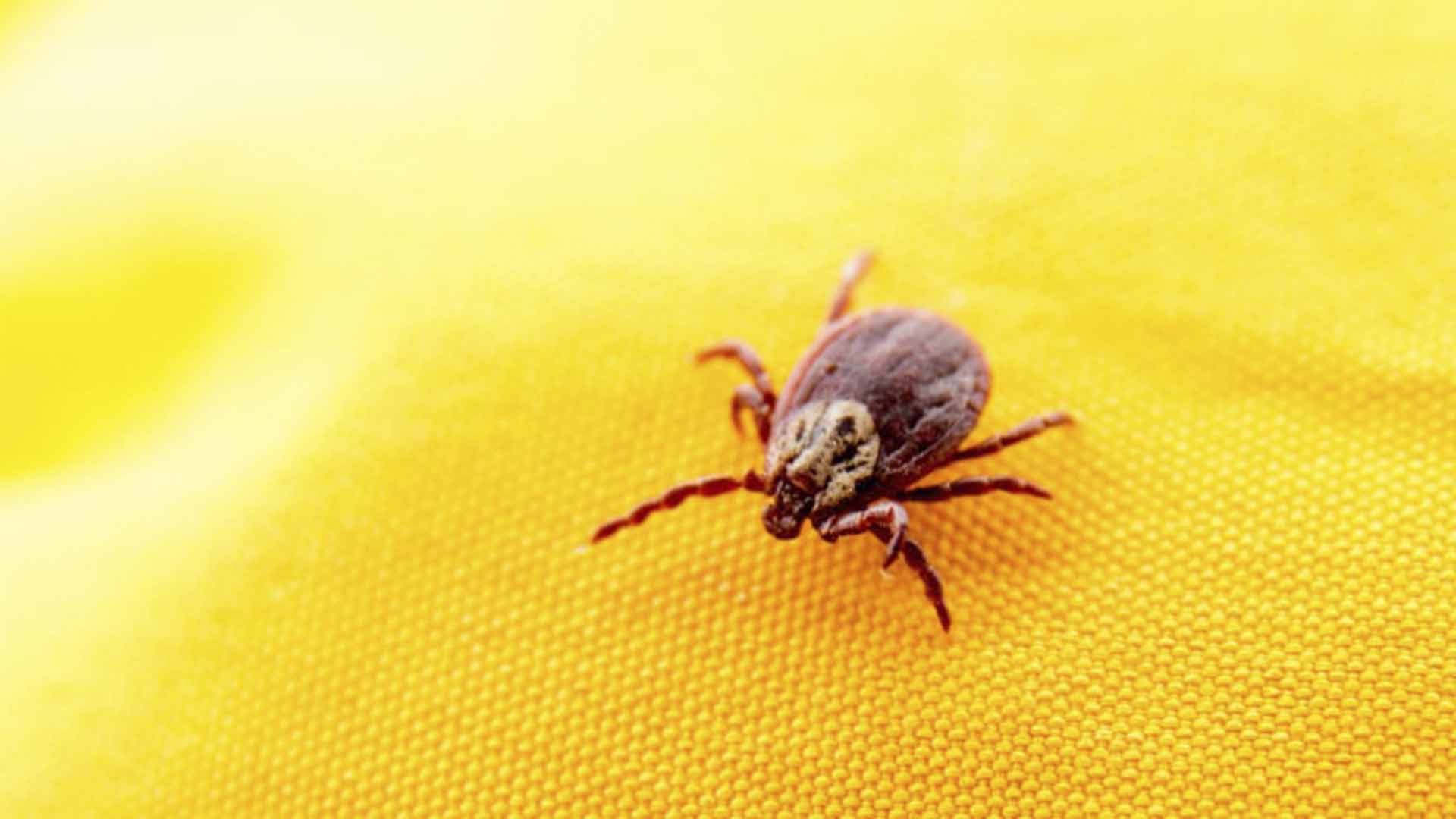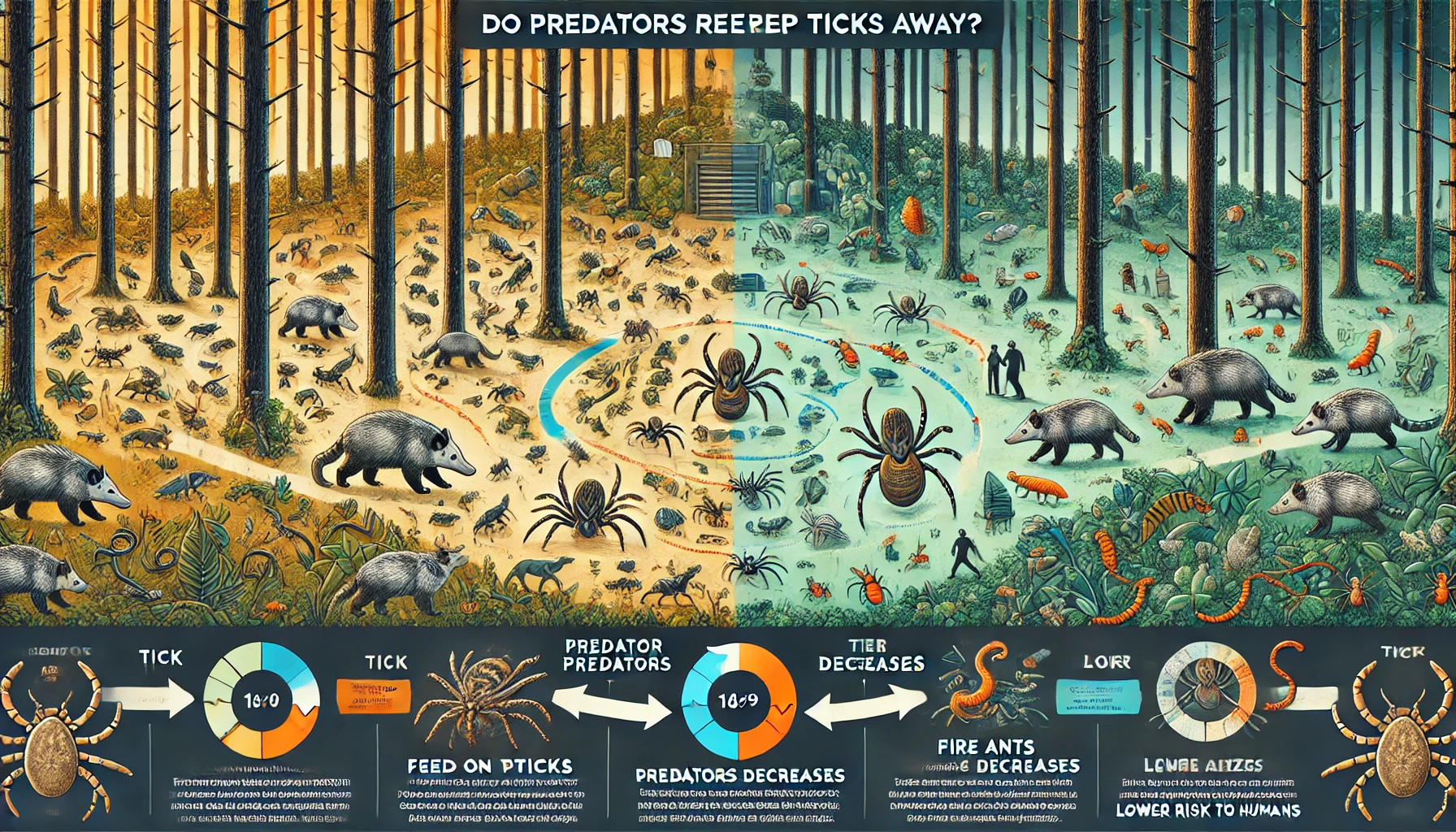Key Takeaways
- Natural predators like birds, mammals, reptiles, and insects significantly reduce tick populations.
- Opossums and guinea fowl are particularly effective tick controllers.
- Supporting diverse wildlife habitats encourages natural tick management.
- Combine predator-friendly yard practices with regular maintenance and safe treatments to maximize tick control.
 Ticks are not only disturbing insects – they carry diseases such as a dangerous hiccups such as lyme, which have severe risk for your family and pets. But do you know what? Nature has got our back! A squad of natural tick hunters helps in quietly managing these small tiny blood suckers daily.
Are you curious who these heroes are and how to invite them to your yard? let’s explore!
Ticks are not only disturbing insects – they carry diseases such as a dangerous hiccups such as lyme, which have severe risk for your family and pets. But do you know what? Nature has got our back! A squad of natural tick hunters helps in quietly managing these small tiny blood suckers daily.
Are you curious who these heroes are and how to invite them to your yard? let’s explore!


Not getting a solution?
Get your free pest control estimate today!Birds: Your Backyard Tick Patrol
Have you ever watched birds hopping around your yard and wondered what they’re up to? Turns out, many are on a mission to munch on ticks. Guinea fowl are like the superheroes of the tick-eating world. These quirky birds can eat hundreds of ticks daily—no joke. Homeowners, especially those in rural areas, love keeping them around for this reason. Chickens aren’t far behind. These backyard friends tirelessly peck through lawns, picking off ticks as casually as we’d grab snacks during a Netflix binge. Wild turkeys chip in, too—though they’re more casual diners, occasionally snapping up ticks between bites of their usual meals. And don’t underestimate the smaller birds. Songbirds—think robins, wrens, and sparrows—catch plenty of ticks, especially during nesting season when every extra protein snack counts. Want more birds around? Set up feeders, birdbaths, and birdhouses to roll out the welcome mat.Mammals: Nature’s Fuzzy Clean-Up Crew
You might be surprised that mammals—even the furry ones—help by grooming themselves and inadvertently gobbling up ticks. Meet the opossum: probably nature’s most underrated pest control expert. One opossum can take out thousands of ticks every season by meticulously grooming itself. And here’s a fun fact: they’re immune to tick-borne diseases, making them a perfect ally in the battle against ticks. But it’s complicated with rodents—squirrels, chipmunks, and mice. Sure, they carry ticks but consume them regularly while grooming, unintentionally reducing tick numbers. It’s a bit of a love-hate relationship, but they do their part. Even raccoons and foxes chip in during their grooming rituals, although they aren’t as tick-obsessed as opossums. Providing safe habitats away from human living spaces can encourage these beneficial mammals to naturally hang around and help out.
Reptiles and Amphibians: The Silent Tick-Fighters
Let’s talk about the creatures you rarely see but quietly control the tick population behind the screen. The fence lizards and the screws are surprisingly efficient in snatching grass and low vegetation, especially in warm states. Frogs and tods also step into the field, tickling carelessly that they face their normal bugs during hunting. You can’t think of frogs as tick control, but they are secretly on your side! Even small snakes, which you can usually ignore or even survive, can help by consuming ticks indirectly because they hunt rodents or other small animals to take ticks. Takeaway? A healthy, reptile environment is working to make your yard a less tick-friendly.Insects and Arachnids: Tiny Allies with Big Impacts
Now let’s talk insects and spiders. Yes, even these tiny creatures play a huge role in tick control. Fire ants, known for their aggressive nature, are surprisingly helpful when it comes to ticks. They actively destroy tick larvae and eggs, dramatically reducing tick populations in areas they inhabit. Regular ants pitch in, too, often scavenging tick eggs from your yard. Spiders might not be your favorite houseguest, but species like orb-weavers and wolf spiders earn their keep by capturing and consuming ticks. Beetles and centipedes also quietly patrol your yard, consuming tick eggs and larvae hidden beneath leaves and grass. To encourage these beneficial insects, ease off the harsh insecticides. A balanced yard ecosystem naturally reduces tick numbers without much fuss.
Do Natural Predators Really Keep Ticks Away?
Here’s the thing—while nature’s squad does impressive work controlling tick numbers, it’s unrealistic to expect complete eradication. Ticks are persistent little creatures, after all. But here’s the good news: natural predators significantly manage tick populations, preventing them from overwhelming your yard. By supporting these natural predators, you’re not just controlling ticks; you’re also lowering the risk of diseases like Lyme and keeping your yard healthier in the long run.Practical Ways to Welcome Tick-Eating Wildlife
Want these natural allies working harder for your yard? Here are a few easy strategies:- Set up bird-friendly spaces with native plants, feeders, and water sources.
- Allow opossums safe passage through your yard (no trapping, please!), securing garbage and pet food instead.
- Maintain small natural areas with native plants and leaf litter—perfect habitats for beneficial insects, reptiles, and amphibians.
- Introduce chickens or guinea fowl if local regulations allow—they’re effective and entertaining pest controllers!

Beyond Natural Predators: Extra Tick Control Measures
Nature’s helpers do their best, but adding a few proactive steps—oops, sorry! Scratch that—adding a few simple steps can enhance protection against ticks:- Regularly mow grass and remove tall weeds, as ticks prefer shady, humid spots.
- Create wood-chip or gravel barriers to prevent tick migration into high-traffic areas.
- Try eco-friendly tick solutions, like tick tubes or natural fungal sprays targeting ticks specifically.
- Stay diligent: Perform regular tick checks on yourself, your kids, and pets, especially after time spent outdoors. And definitely consider veterinarian-approved tick treatments for pets.
If you feel things have gone out of control, it is advised to contact pest control professionals. Our team can provide a customized approach to protect your home effectively.
Visit our Species, Control, and DIY Guide sections for additional resources on ticks and ways to tackle a tick infestation.





